In today’s marketing landscape, brands are under constant pressure to produce more content, faster. Audiences expect fresh insights across blogs, social channels, email campaigns, and multimedia platforms. But scaling content production sustainably—without diluting quality—remains one of the biggest challenges for marketing teams.
That’s where content atomization comes in. At its core, content atomization is the process of transforming one “big idea”—like a whitepaper, webinar, or research report—into dozens of derivative deliverables. It’s not about recycling or copy-pasting. It’s about strategically repurposing content into formats tailored for different channels, audiences, and stages of the buyer journey.
In this playbook, we’ll break down how to turn a single asset into a full campaign ecosystem, outline best practices to follow, and highlight common pitfalls to avoid.
What Is Content Atomization and Why It Matters
Content atomization is the practice of breaking down a larger piece of content into smaller, more focused assets. For example, a 20-page research report might become a three-part blog series, a webinar, a handful of infographics, a podcast episode, and a set of social media posts.
The benefits are clear:
- Scalability – One idea can fuel a month or more of campaigns.
- Efficiency – Reduce the time and resources needed to create net-new content.
- Message consistency – Ensure a unified brand narrative across platforms.
- ROI – Extend the lifespan and impact of flagship content investments.
In a world where marketing teams face increasing pressure to be “always on,” content atomization provides a framework for digital marketing efficiency without sacrificing quality.
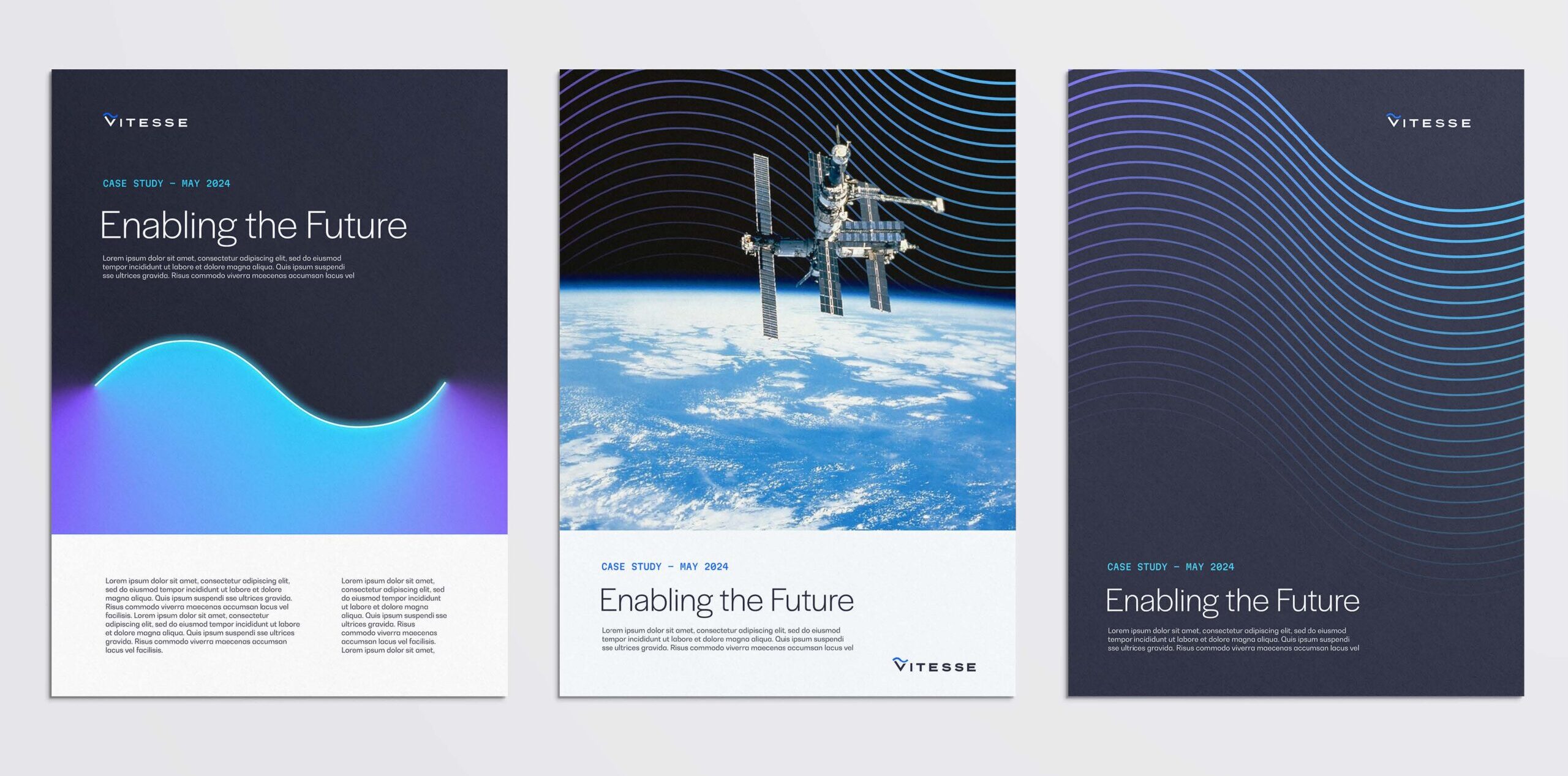
The Content Atomization Framework
Think of content atomization as a hub-and-spoke model. At the hub sits your core asset—a whitepaper, webinar, keynote, or research report. From there, spokes radiate outward into derivative assets that extend the core message into different channels and formats.
Core Asset (The Big Idea)
Your atomization strategy begins with one substantial piece of content. This could be:
- A research-driven whitepaper
- A recorded webinar or virtual panel
- A keynote presentation
- A case study or success story
This core asset is your intellectual “pillar” that everything else builds from.
Derivative Assets
Here’s how a single core asset can splinter into dozens of deliverables:
- Blogs & Articles – Break down sections into topic-specific posts optimized for search.
- Social Content – Extract key quotes, statistics, and visuals for LinkedIn, X, and Instagram.
- Thought Leadership – Draft contributed articles or op-eds drawing from core themes.
- Email Campaigns – Create nurture sequences that tease insights and drive downloads.
- Infographics & Visuals – Translate data-heavy sections into shareable graphics.
- Video & Audio – Clip webinar highlights into short-form videos or podcast segments.
- Interactive Assets – Turn research into calculators, quizzes, or gated interactive tools.
The beauty of this model is that one initial investment produces a multi-channel marketing ecosystem—meeting audiences where they are with content that feels purpose-built.
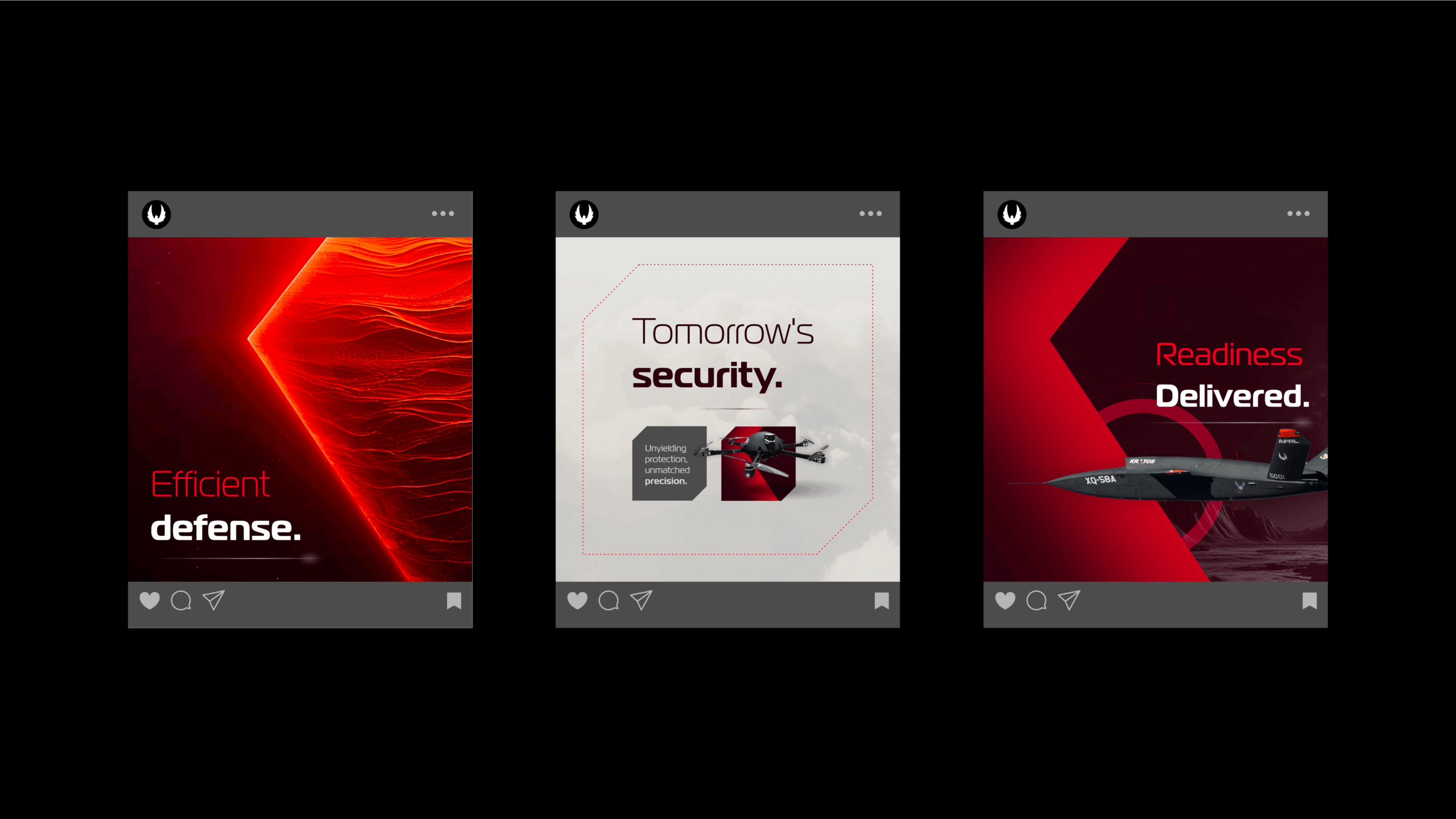
Real-World Examples of Content Atomization in Action
To illustrate, let’s look at two scenarios where brands can apply this approach:
Example 1: Whitepaper Atomization
- A cybersecurity company develops a whitepaper on emerging threats.
- The whitepaper becomes:
- Three blog posts on specific threat categories
- An infographic visualizing attack trends
- A webinar with subject matter experts
- A LinkedIn carousel highlighting key statistics
- A nurture email sequence linking to each derivative piece
Example 2: Webinar Atomization
- A SaaS brand hosts a webinar on customer experience trends.
- From the recording, the marketing team creates:
- A recap blog post with takeaways
- Short video clips optimized for LinkedIn
- A thought leadership article by the webinar host
- A podcast episode edited from the Q&A session
- A set of sales enablement slides for the field team
In both cases, the original asset fuels an entire campaign ecosystem—maximizing reach while reducing the demand for net-new production.
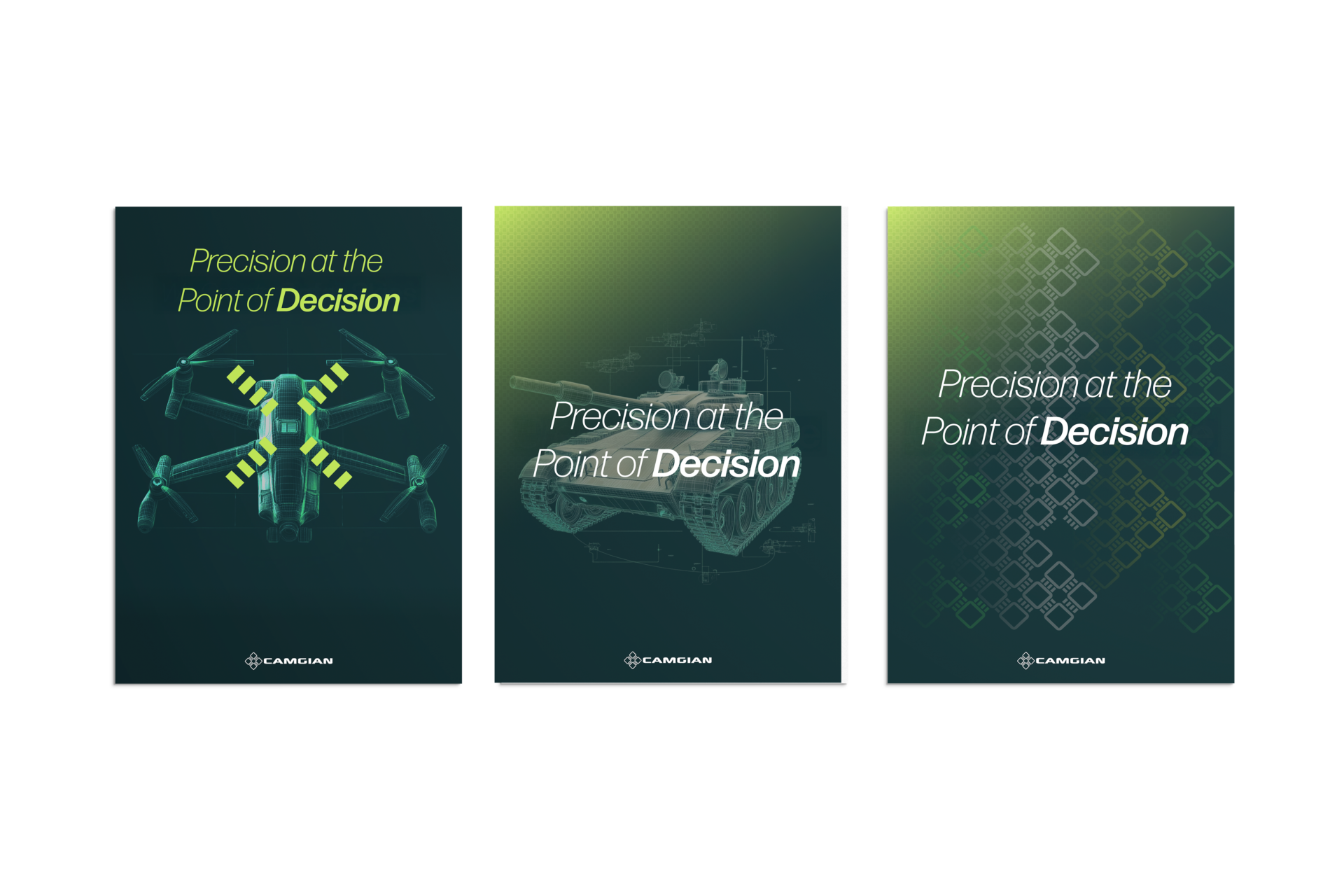
Best Practices for Scaling Your Content Atomization Strategy
While the concept is straightforward, executing content atomization effectively requires discipline. Here are best practices to guide your approach:
- Start with a strong “pillar” asset. Choose an idea that is broad enough to support multiple derivatives and relevant enough to resonate across buyer stages.
- Map assets to the buyer journey. Ensure derivative content addresses awareness, consideration, and decision-making phases.
- Adapt to each channel. Don’t simply repost—customize tone, format, and length for blogs, social, and video.
- Leverage analytics. Use engagement metrics to prioritize which derivative formats perform best with your audience.
- Maintain consistency. Keep design, voice, and key messages aligned across all pieces to reinforce the campaign.
- Use AI wisely. Artificial Intelligence tools can accelerate drafting and formatting but should be guided by brand voice and editorial oversight.
When done right, atomization amplifies your reach without sacrificing quality or cohesion.
Common Mistakes to Avoid
Content atomization can be powerful, but there are traps to watch for:
- Republishing instead of repurposing. Copying text from one channel to another rarely works. Content must be reshaped for its audience and format.
- Lack of channel-specific optimization. A LinkedIn carousel should look and feel different from a blog post or nurture email.
- Ignoring SEO. Each derivative piece should be optimized with keywords, metadata, and internal links to strengthen discoverability.
- Overproduction without strategy. Don’t create derivative assets for the sake of volume—prioritize formats your audience values most.
Avoiding these pitfalls ensures that your atomization efforts drive real results rather than just more content.

Building Your Own Content Atomization Playbook
So how can your team put this into practice? Start by developing a repeatable playbook:
- Identify the core asset. Whitepaper, webinar, or report.
- Audit potential derivatives. Map out blogs, social, emails, and visuals.
- Align with the buyer journey. Match content to awareness, consideration, and decision stages.
- Develop a rollout plan. Stagger content releases to sustain engagement over time.
- Measure and refine. Track performance to see which atomized pieces resonate most.
By creating a systematic process, you can ensure that every major content investment continues to pay dividends long after launch.
Maximizing the Value of Every Idea
Marketing teams don’t always need to chase the next “big idea.” Often, the smartest move is to extract more value from the ideas you already have. Content atomization offers a roadmap for doing exactly that—fueling multi-channel campaigns, ensuring message consistency, and maximizing ROI.
At Bluetext, we help brands design and execute content marketing frameworks that scale. From developing high-impact core assets to rolling out full atomization ecosystems, our team ensures that one idea becomes dozens of deliverables—without sacrificing quality or creativity.
Looking to maximize the value of your content? Bluetext helps brands transform big ideas into multi-channel campaigns that drive results. Contact us today.
The only constant in marketing is change. Platforms evolve, budgets tighten, algorithms shift, and buyer behavior grows more complex by the quarter. For brands reliant on rigid campaigns or single-channel tactics, these changes can upend even the most carefully laid plans.
That’s why marketers today must focus on future-proofing their funnels. Instead of chasing the next quick fix, resilient organizations design strategies that adapt, campaigns that flex, and content frameworks that hold up in times of uncertainty. Future-proofing isn’t about predicting every twist and turn—it’s about building the agility to withstand them.
Why Future-Proofing Your Funnel Matters
The risks of not preparing are real. A sudden change to Google’s algorithm can slash your organic reach. A downturn in the economy can freeze budgets and elongate sales cycles. Shifts in social media platforms can alter how buyers discover and evaluate solutions.
In B2B especially, where long decision cycles and high-stakes purchases dominate, a fragile funnel can quickly dry up. On the other hand, brands that adapt fast capture market share. By prioritizing resilience and agility, marketers can keep pipeline steady—even when external forces are unpredictable.
How to Build Agile Campaigns
Agility starts with campaign design. Traditional “set it and forget it” marketing no longer works when conditions can change overnight. Instead, marketers should:
- Iterate and optimize continuously. Shorten campaign cycles and test variables regularly.
- Leverage real-time data. Use dashboards and analytics to spot performance changes early.
- Build modular campaigns. Design assets that can be repurposed, scaled up, or scaled back depending on need.
This agile mindset keeps campaigns aligned with current buyer realities while maintaining the flexibility to pivot quickly.

Designing Flexible Content Frameworks
If campaigns are the fuel, content is the engine. To future-proof your funnel, content must be both adaptable and evergreen.
- Evergreen content as a foundation. Assets like thought leadership blogs, explainer videos, and white papers hold value regardless of market shifts.
- Repurposing strategies. A single webinar can become blog posts, short-form videos, infographics, and social campaigns—stretching value across channels.
- Evolving with buyer needs. Content frameworks should be broad enough to adapt as buyer pain points change, while still specific enough to drive relevance.
The goal is a flexible content library that feeds the funnel consistently, no matter the channel or trend of the moment.
Adapting to Evolving Buyer Behavior
Today’s B2B buyers don’t follow a linear journey. They self-educate, compare across platforms, and consult multiple stakeholders before making decisions. Future-proof funnels must reflect this reality:
- Be omnipresent. Ensure your brand is discoverable across digital touchpoints, from LinkedIn to search to industry forums.
- Prioritize personalization. Tailor messaging based on industry, role, and intent signals.
- Enable self-service. Provide demos, calculators, and resources that let buyers explore at their own pace.
By aligning with how buyers want to engage, marketers stay relevant regardless of external shifts.

Measuring Funnel Resilience
How do you know if your funnel is future-proof? Look for signs of flexibility and sustainability:
- Conversion velocity. Are leads moving through stages efficiently, or getting stuck when conditions change?
- Pipeline diversity. Are you reliant on one or two channels, or do you have a mix of demand sources?
- Multi-touch attribution. Do you understand which touchpoints are most effective at each stage?
Early warning signs—like sharp drops in inbound leads after a platform update—signal funnel fragility. Tracking resilience-focused KPIs helps you pivot before major disruption hits.
Best Practices to Withstand Change
Resilient funnels don’t happen by accident—they’re the product of intentional design. To strengthen yours:
- Diversify channels. Don’t overinvest in a single source of traffic or leads.
- Build cross-functional alignment. Marketing and sales should collaborate continuously to refine messaging and prioritize accounts.
- Adopt agile technologies. Automation platforms, AI-driven analytics, and CRM integrations allow for faster pivots and real-time insights.
- Plan for scenarios. Develop “what-if” strategies for potential shifts in buyer behavior or industry trends.
These practices not only protect against disruption but also accelerate growth during periods of stability.
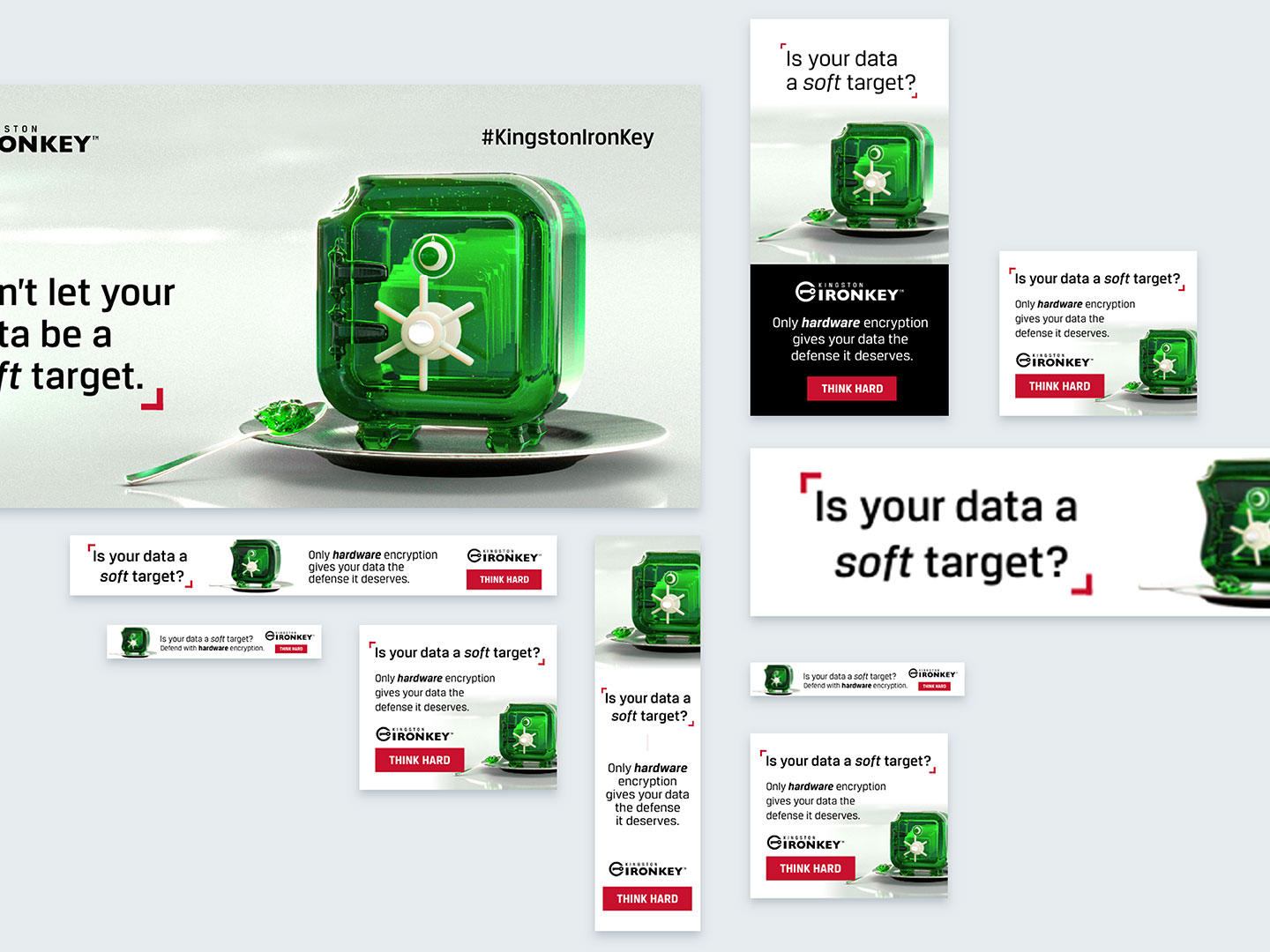
Resilience as a Competitive Advantage
Future-proofing your funnel isn’t about eliminating uncertainty—it’s about building marketing systems that thrive in spite of it. The brands that win in the years ahead won’t necessarily be the biggest or loudest. They’ll be the most adaptable.
By embracing agility in campaigns, flexibility in content, and responsiveness to buyer behavior, marketers can turn resilience into a true competitive advantage.
If your organization is ready to future-proof its funnel, Bluetext can help you design agile campaigns and flexible frameworks that withstand disruption and drive sustainable growth. Contact us today.
As the federal government heads into the final stretch of 2025, the policy and budget calendar is packed with crucial milestones that will shape the year ahead. From debates on defense spending to the potential for a government shutdown, businesses, policymakers, and stakeholders alike should keep a close eye on the following timeline.
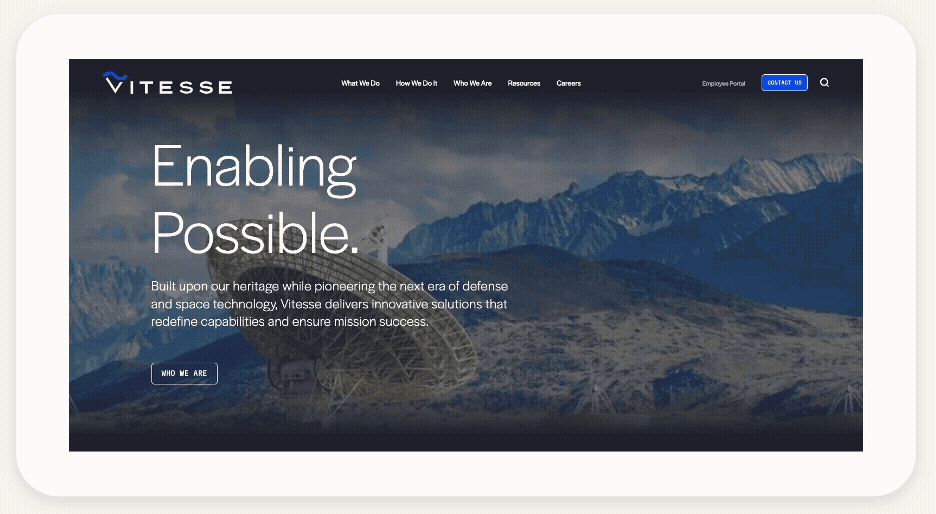
September: Congress Returns, Defense Debate Heats Up
- September 2 – Congress reconvenes
The House and Senate return from the August recess facing a compressed fall schedule. The limited number of working days combined with partisan divides makes September a critical month for moving legislation. - Mid- to Late September – NDAA debate
The FY26 National Defense Authorization Act (NDAA) is expected to dominate floor time. The NDAA, one of the few “must-pass” bills, establishes defense policy priorities for the coming fiscal year. It will likely spark heated debates on issues ranging from military modernization and cybersecurity to funding levels for Ukraine, Taiwan, and Indo-Pacific deterrence. For defense contractors, the bill provides an early signal of where funding opportunities—and risks—may lie. - September 22–26 – A scheduled recess
Just as momentum begins to build, both chambers step away for a recess, followed by additional staggered breaks throughout the fall. This further compresses the legislative calendar, leaving fewer days for action before the October funding deadline.
October: Funding Deadline Looms
- October 1 – Start of FY26
The new fiscal year begins, but appropriations are unlikely to be completed. Congress must decide between passing a continuing resolution (CR)—which extends current funding levels temporarily—or risking a government shutdown. Both outcomes create uncertainty: a CR locks agencies and contractors into prior-year spending patterns, while a shutdown halts federal operations, delays payments, and disrupts contracts. - October Recesses
Compounding the challenge, both the House and Senate will take recesses during the first half of the month, shrinking the window for negotiations. This dynamic often pushes deals closer to the brink, increasing the likelihood of stopgap measures instead of long-term appropriations.
November-December: Budget Battles and Year-End Deadlines
- November–December – OMB passbacks
The Office of Management and Budget (OMB) issues its “passbacks” on agency budget requests for FY27. These directives shape how agencies revise their plans before submitting final budget proposals to the White House. For industry, passbacks serve as an early readout of the administration’s strategic priorities—whether that’s more investment in emerging technologies, infrastructure, or healthcare. - December 18–19 – Year-end deadlines
Congress faces its traditional year-end cliff: the House adjourns on December 18, and the Senate on December 19. The final weeks often see frenetic activity, as lawmakers push through spending bills, policy riders, and sometimes major legislative packages. For businesses, this is a period to watch closely, as last-minute provisions can significantly impact markets, industries, and federal contracting.
Early 2026: State of the Union and FY27 Budget
- January – State of the Union (date TBD)
The President’s annual address provides both a policy roadmap and a political message. With the 2026 midterm elections on the horizon, expect the speech to highlight administration achievements while laying out funding priorities that appeal to key constituencies. For stakeholders, this is a chance to gauge where legislative energy may flow in the coming year. - February – FY27 budget release (date TBD)
The White House submits its FY27 budget to Congress, officially launching the next cycle of budget negotiations. This submission sets the tone for appropriations debates and signals which programs may see growth or cuts. Federal contractors and agencies alike should prepare to align their strategies with these early indicators.
Ongoing Considerations
- Senate confirmations
Executive and judicial nominations remain a steady undercurrent throughout the year. Prolonged confirmation battles can slow agency leadership transitions and judicial appointments, both of which have downstream effects on policy implementation and regulatory enforcement. - Industry engagement
Groups such as the Professional Services Council (PSC) continue to provide valuable context for businesses navigating the budget cycle. Events like the September 4th session with Houlihan Lokey offer insights into fiscal trends, acquisition strategies, and the broader political environment. Staying connected to these updates is critical for interpreting policy shifts in real time.
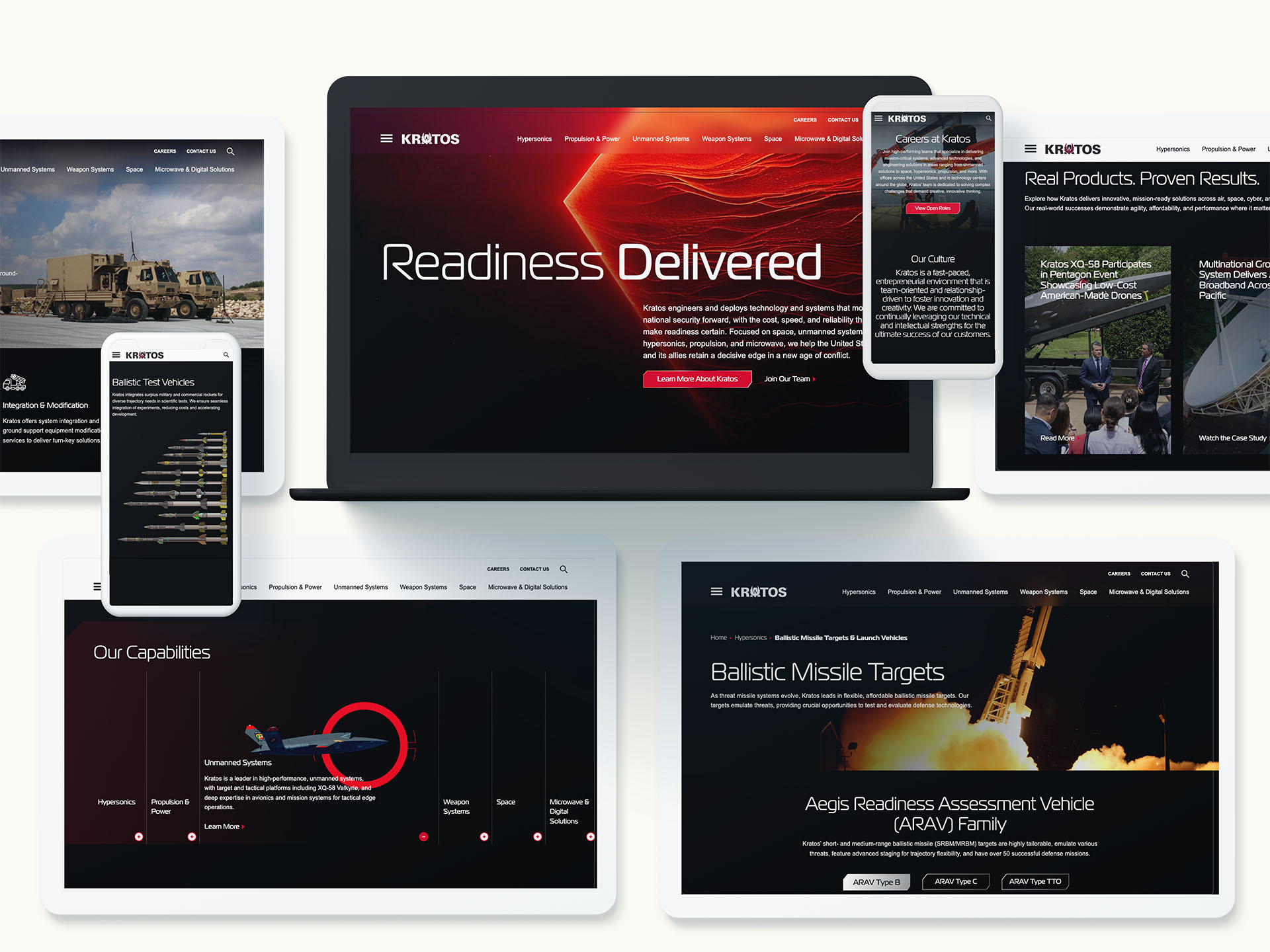
Why This Matters
For contractors, investors, and agencies, this timeline is more than just dates on a calendar—it represents moments of risk, opportunity, and strategic inflection. Key areas of focus include:
- Defense Spending – The NDAA sets the framework for defense priorities and investments, shaping opportunities across the national security sector.
- Government Funding – CRs and shutdown threats introduce uncertainty, delaying projects, disrupting hiring, and constraining innovation.
- Future Budgets – OMB passbacks and the FY27 budget submission provide an early glimpse of long-term priorities that will ripple through industries well beyond Washington.
Final Takeaway
The remainder of 2025 and the start of 2026 will be defined by fiscal deadlines, defense debates, and political positioning. For federal contractors, investors, and policymakers, the key to navigating this landscape lies in preparation and engagement. By tracking these milestones, anticipating potential disruptions, and aligning with emerging priorities, stakeholders can position themselves not only to manage risk—but to seize opportunity in a rapidly evolving federal landscape. Bluetext partners with organizations to translate these complexities into actionable strategies—contact us today to position your organization for success.
In today’s crowded B2B landscape, breaking through the noise at tradeshows and industry events is no small feat. Enterprise buyers—whether they’re CIOs, procurement leaders, or CTOs—are inundated with information. Traditional booths, static signage, and printed brochures often fail to hold their attention. That’s why forward-thinking brands are turning to holograms, augmented reality (AR), and other immersive technologies to redefine experiential marketing.
By weaving futuristic tech into live events, companies can transform how buyers engage with their story. Holograms and AR don’t just create a “wow” factor—they give complex solutions life, provide interactivity at scale, and ensure your brand stands apart in a sea of sameness.
Why Experiential Marketing Matters in B2B
For consumer brands, experiential marketing has long been a staple—from pop-up shops to AR-powered retail experiences. But for B2B marketers, particularly those selling complex technologies or services, the stakes are even higher.
Enterprise buyers are hard to reach and harder to impress. They face long decision cycles, manage risk-averse teams, and often evaluate multiple vendors at once. Experiential marketing bridges that gap by:
- Creating memorable moments that stick long after the event ends.
- Demonstrating solutions in ways a slide deck never could.
- Increasing dwell time at booths and driving qualified conversations.
In fact, studies show that interactive brand experiences can boost recall and preference far more effectively than passive marketing tactics. For brands competing in industries like financial services, SaaS, or healthcare tech, that advantage can mean pipeline acceleration and stronger ROI.
Holograms in B2B Marketing
When most people hear “hologram,” they think of pop culture icons like Tupac’s famous Coachella performance or ABBA’s holographic concert series. But in the B2B world, holograms are rapidly moving from novelty to necessity.
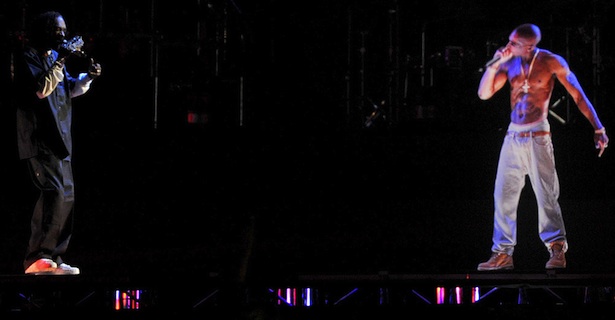
Imagine showcasing an industrial machine too large to transport—or visualizing a SaaS platform’s architecture in 3D. With holograms, marketers can:
- Bring products to life without shipping hardware.
- Stage immersive keynotes featuring remote executives.
- Build larger-than-life experiences that spark curiosity.
The impact is both practical and emotional: prospects understand complex offerings faster, while also walking away with a sense that your brand is forward-thinking and innovative.
AR for Tradeshows & Events
Augmented reality takes interactivity even further by layering digital experiences over the physical world. At tradeshows, AR can empower attendees to:
- Explore virtual overlays on physical product demos.
- Visualize solutions in their own environment—such as simulating software workflows or visualizing a network architecture.
- Participate in gamified experiences, like AR scavenger hunts, interactive quizzes, or guided storytelling journeys.
Beyond engagement, AR allows for scalable personalization. For example, a visitor could scan a QR code and view an AR demo tailored to their industry, role, or business challenge—ensuring the content feels relevant and useful.

The Future of Experiential B2B Marketing
Looking ahead, the convergence of holograms, AR, and AI will further transform tradeshows and customer events. Imagine:
- XR booths where physical and digital seamlessly blend.
- Mixed reality product demos that combine live interaction with holographic overlays.
- AI-driven personalization that adapts immersive experiences in real-time based on attendee behavior.
As generative AI accelerates, these technologies won’t just be eye-catching—they’ll become tools for capturing data, measuring intent, and guiding buyers deeper into the funnel. Experiential marketing will evolve from “brand theater” into a measurable, pipeline-driving engine
Best Practices for Implementing Futuristic Tech
Adopting holograms and AR doesn’t mean chasing trends blindly. To make immersive B2B marketing successful, brands should:
- Align with the buyer journey. Use holograms and AR at touchpoints where they add real value, such as product education or executive engagement.
- Keep it intuitive. Experiences should feel natural and easy, not overwhelming or gimmicky.
- Measure outcomes. Track KPIs like booth traffic, dwell time, and lead quality to quantify ROI.
- Choose the right partners. Execution matters—work with agencies and technology providers who can deliver polished, reliable experiences.
The Future Belongs to the Bold
Enterprise buyers are savvy, skeptical, and selective. To win their attention, B2B brands need to go beyond brochures and digital ads—they need to create experiences that captivate, educate, and inspire.
Holograms and AR represent more than just flashy technology. They’re the future of experiential B2B marketing, offering new ways to stand out, tell your story, and connect with decision-makers on a deeper level.
If your brand is ready to explore holograms, AR, or other next-gen experiential strategies, Bluetext can help you design experiences that engage enterprise buyers and deliver measurable results. Contact us today.
For brands in highly regulated industries like healthcare, finance, or defense, social media often feels like a double-edged sword. On one hand, it offers powerful tools for engagement, brand awareness, and lead generation. On the other, strict compliance rules can make marketers wary of posting anything at all.
The good news: regulated brands can thrive on social media—but only if they strategically balance creativity with compliance. With the right approach, social campaigns can be both bold and fully compliant, helping brands stand out while avoiding legal or reputational risks.
Why Social Media Matters for Regulated Brands
Social media is no longer optional for professional brands; it’s a critical channel for communication and engagement. Decision-makers in healthcare, finance, and defense increasingly rely on digital platforms to research solutions, share insights, and build professional networks.
For example, healthcare organizations can educate providers and patients, finance brands can simplify complex financial concepts, and defense contractors can showcase thought leadership and innovation. Statistics show that over 80% of B2B buyers research companies on social media before making decisions, making a strong presence crucial—even in regulated spaces.
By developing a social media strategy for regulated industries, brands can increase reach, build trust, and position themselves as leaders in their sector—all without compromising compliance.
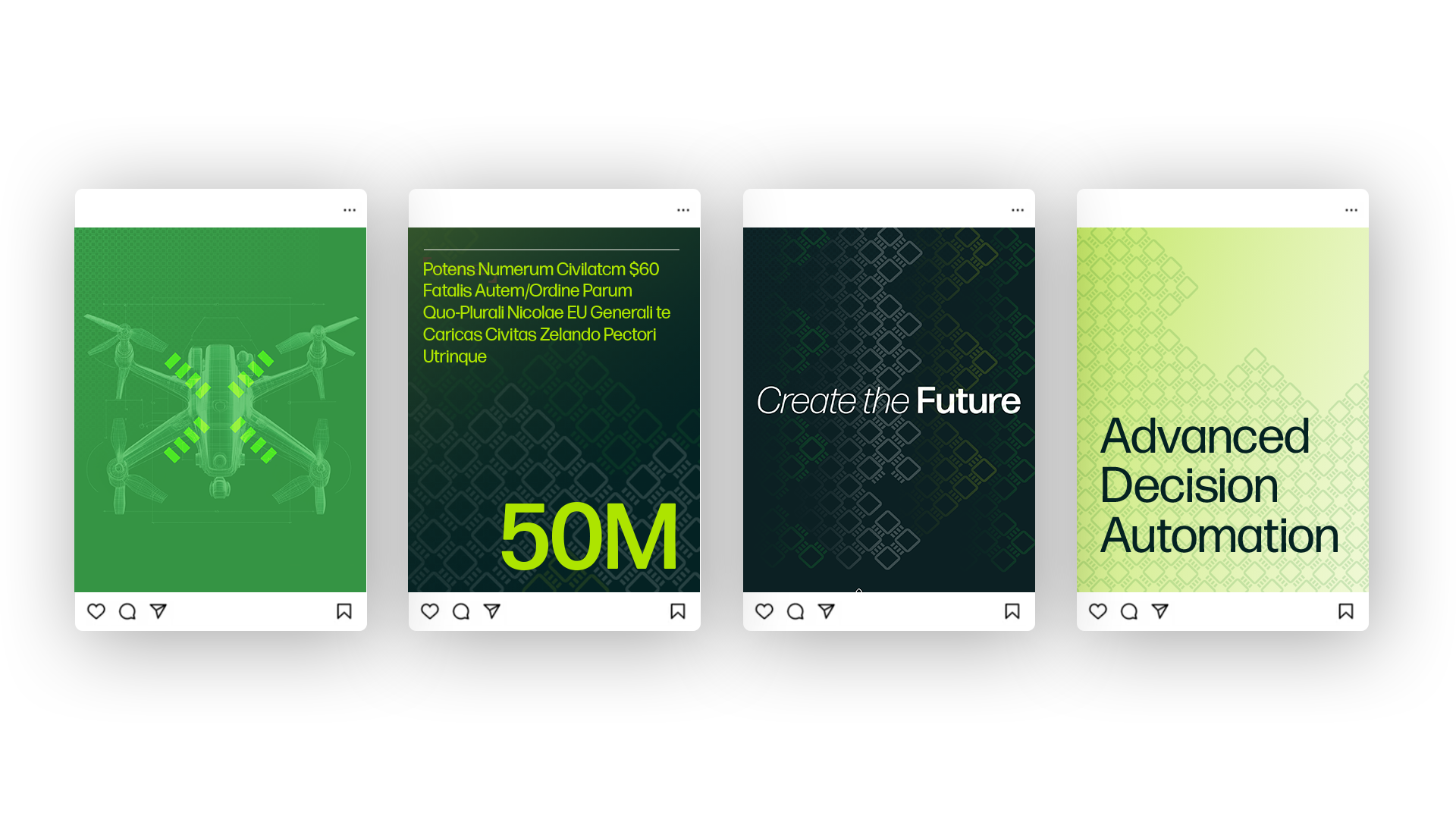
Common Compliance Challenges
Marketing in regulated industries comes with unique challenges. Some of the most common include:
- Legal Restrictions: HIPAA in healthcare, SEC advertising rules in finance, and ITAR regulations in defense create boundaries for what can be posted.
- Privacy Concerns: Protecting sensitive customer or patient data is paramount.
- Content Approval Requirements: Many posts require review from legal or compliance teams before publication.
- Brand Reputation Risk: A single misstep can have significant financial or reputational consequences.
Understanding these friction points is key to designing campaigns that are both compliant and effective. Even minor missteps—like sharing unapproved data or making inaccurate claims—can have major consequences.

Strategies for Compliant-yet-Bold Campaigns
Regulated doesn’t mean boring. There are proven strategies to make social campaigns engaging while staying within compliance boundaries:
- Risk-Aware Creativity: Focus on storytelling, thought leadership, and educational content rather than promotional claims.
- Approval Workflows: Establish clear processes for legal and compliance review to ensure content aligns with regulations.
- Visual Consistency: Use graphics, video, and interactive formats to make content engaging without crossing compliance lines.
- Audience Segmentation: Tailor messaging for specific audiences to maximize relevance while controlling exposure.
- Monitor & Iterate: Track engagement metrics and compliance feedback to continuously improve campaigns.
By implementing these strategies, regulated brands can create social campaigns that are bold, relevant, and fully compliant, turning social media into a true growth lever.
Building a Platform for Ongoing Compliance
Long-term success on social media requires more than individual posts—it requires an internal framework. Brands should consider:
- Policy Templates: Standardized guidelines for content creation and posting.
- Training Programs: Educate marketers and social managers on compliance rules and industry regulations.
- Cross-Functional Collaboration: Close coordination between marketing, legal, and compliance teams.
- Monitoring Tools: Use social listening and compliance software to catch issues before they escalate.
A well-designed platform for compliance enables teams to move quickly, post boldly, and maintain consistent messaging without the fear of regulatory violations.
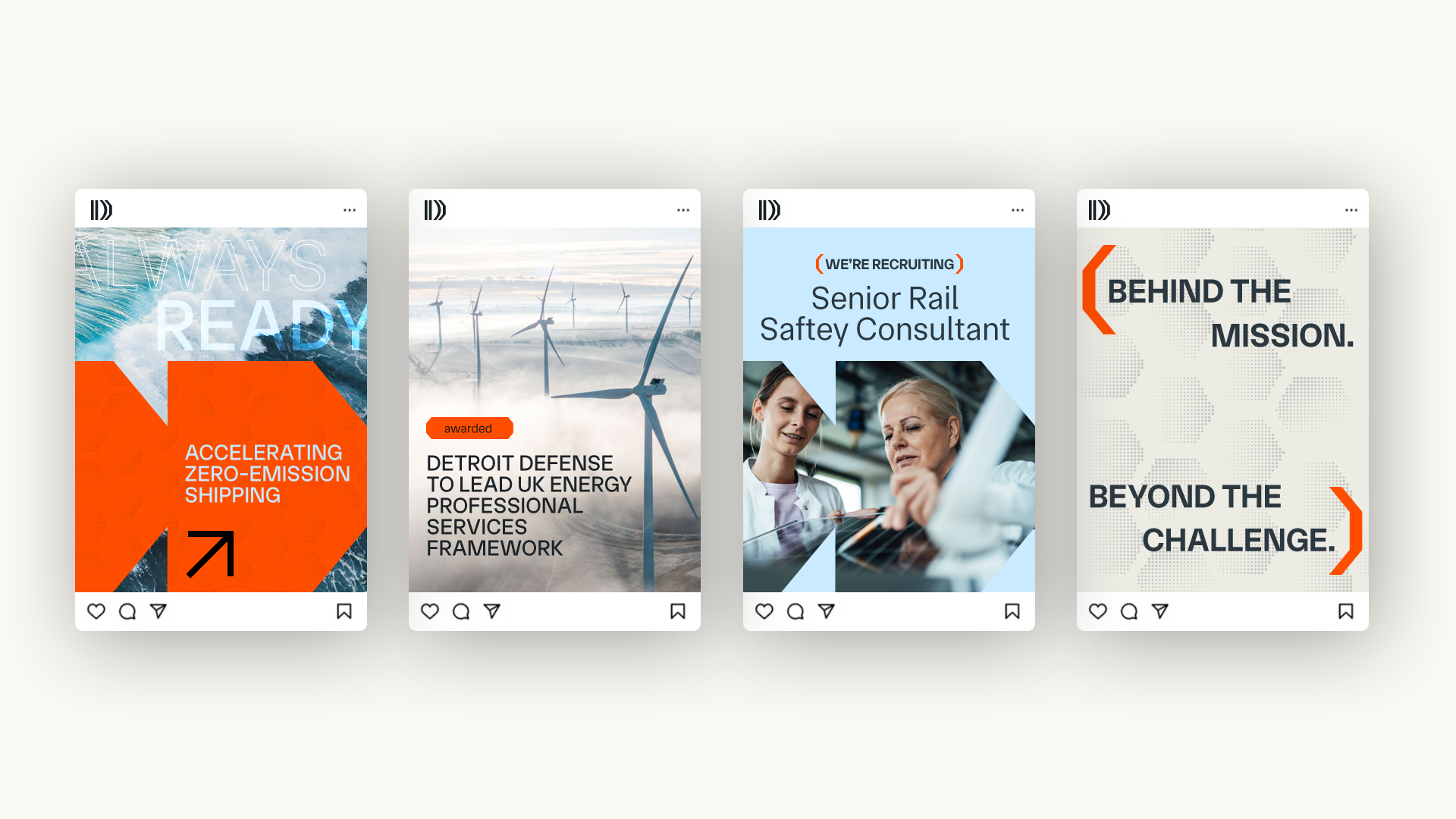
Measuring Success Without Risk
Performance metrics are critical for demonstrating ROI and ensuring campaigns remain compliant:
- Engagement Metrics: Likes, shares, comments, and clicks indicate audience interest.
- Conversion Metrics: Track lead generation, sign-ups, or other campaign objectives.
- Compliance Audits: Regularly review posts for adherence to regulations.
- Sentiment Analysis: Understand audience perception to guide content strategy.
These metrics help brands refine their approach, balance creativity with compliance, and continuously improve social media strategy for regulated industries.

Take the Next Step: Make Social Media Work for Your Brand
Brands in regulated industries no longer have to choose between compliance and engagement. By aligning policy and platform, healthcare, finance, and defense organizations can run bold, effective social campaigns that resonate with audiences while staying within regulatory boundaries.
In today’s B2B world, buyers expect more than competitive pricing and robust features—they demand seamless, intuitive digital experiences. A poorly designed platform or cumbersome form can turn even the most interested prospect away, while a frictionless experience can position your brand as modern, professional, and trustworthy. Paying specific attention to your user experience (UX) is no longer optional; it’s a strategic differentiator that can shape how your brand is perceived in the market.
From microsites to enterprise platforms, frictionless UX allows B2B brands to capture attention, build trust, and drive conversions. In this post, we’ll explore why UX is the new competitive edge in B2B marketing and how companies can leverage it to stand out.

Why UX Matters in B2B Today
The expectations of B2B buyers have evolved dramatically in the last decade. Business decision-makers now compare digital interactions in professional contexts with experiences they have in their personal lives. Slow-loading pages, confusing navigation, or lengthy forms can result in immediate disengagement.
Statistics show that over 70% of B2B buyers abandon websites that are difficult to navigate or too slow to load. A clunky experience is more than an inconvenience—it can directly impact lead generation, conversion rates, and long-term brand perception.
Moreover, friction in the user journey signals inefficiency and unprofessionalism, even if the product itself is top-tier. Conversely, companies that prioritize B2B user experience demonstrate thoughtfulness, credibility, and attention to detail. These subtle cues influence trust and can tip the scales in competitive purchasing decisions.
Friction Points That Hurt B2B Conversions
Understanding where friction occurs is the first step toward creating a seamless experience. Common pain points include:
- Overly Complex Forms: Lengthy, confusing forms discourage completion and lead to lost leads.
- Slow Microsites: Microsites are often designed for campaigns or events, but poor performance can damage the brand’s reputation.
- Disjointed Platform Navigation: When users can’t intuitively find what they need, engagement drops and frustration grows.
- Inconsistent Branding Across Touchpoints: Visual and messaging inconsistencies between platforms, emails, and microsites can create confusion and erode trust.
Each of these friction points reduces engagement and can silently cost revenue. B2B buyers are increasingly unforgiving of digital obstacles, making frictionless UX a critical element of brand strategy.

Frictionless UX as a Differentiator
While price and features have historically been the primary differentiators in B2B markets, UX is emerging as a decisive factor. A frictionless experience signals professionalism, innovation, and customer-centricity—qualities that buyers value alongside product capabilities.
Imagine two SaaS platforms with similar features and pricing. One has a seamless onboarding experience, intuitive navigation, and consistent branding across its website, forms, and dashboard. The other feels clunky, inconsistent, and slow. Even if both solutions deliver the same results, the user is far more likely to adopt and advocate for the platform with better UX.
In effect, UX can amplify your other differentiators, making it as important as pricing, product features, and customer service. For modern B2B brands, frictionless UX is a strategic lever for differentiation.
Designing for a Frictionless B2B Experience
Creating a seamless digital experience requires intentional design across every touchpoint. Key principles include:
- Simplicity: Remove unnecessary steps and streamline processes. A clean, focused interface reduces cognitive load.
- Speed: Optimize page load times and form interactions to prevent frustration and abandonment.
- Intuitive Navigation: Ensure users can find critical information quickly and naturally.
- Consistent Branding: Align visual design, messaging, and tone across platforms, microsites, and forms.
- Responsive Design: Experiences must work seamlessly across devices, from desktops to smartphones.
In addition, B2B brands should consider microsites and forms as critical touchpoints rather than afterthoughts. Campaign microsites should reflect the main site’s brand while delivering a frictionless journey tailored to the audience. Forms should balance lead capture with usability, asking only for essential information at the right moment.
By implementing these principles, companies can turn digital interactions into competitive advantages, rather than mere transactional steps.
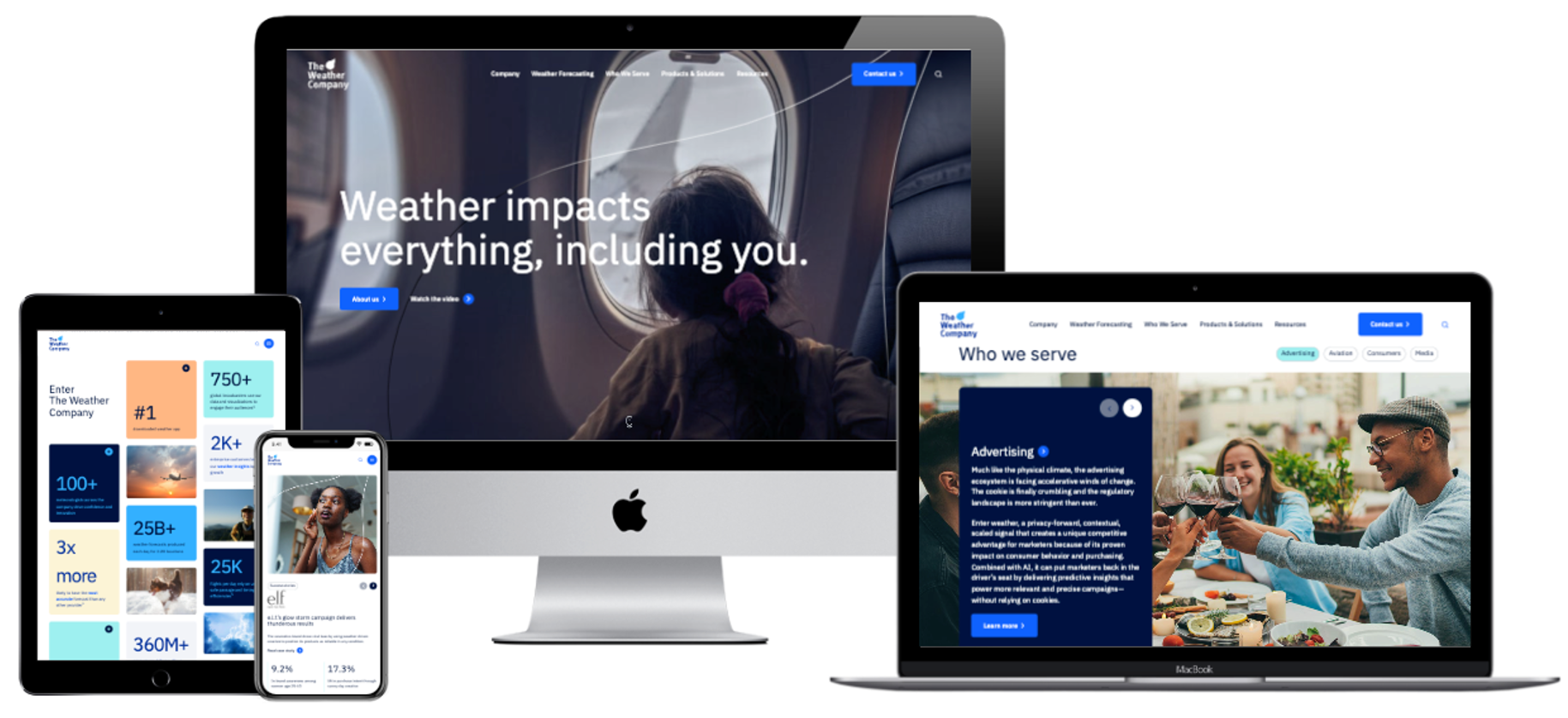
Measuring UX Success in B2B
To ensure your UX efforts are driving results, measurement is essential. Key metrics include:
- Conversion Rates: Are users completing forms, signing up for demos, or making purchases?
- Form Completion Rates: High abandonment indicates friction points.
- Platform Engagement: Track session duration, click paths, and feature adoption.
- Net Promoter Score (NPS) and Customer Feedback: Qualitative insights reveal how users perceive your experience.
These metrics allow teams to iterate and refine digital experiences continuously. By embedding UX evaluation into B2B marketing and sales strategy, organizations can quantify the impact of frictionless design on revenue and brand perception.
Looking Ahead: UX as a Strategic Lever
The future of B2B UX is tied to personalization, AI-driven interfaces, and predictive design. Brands that prioritize frictionless experiences now are positioning themselves for long-term differentiation. Companies that fail to invest in UX risk being perceived as outdated or inefficient, regardless of how compelling their products or pricing may be.
By making UX a central element of B2B differentiation, organizations can improve conversion rates, enhance brand perception, and create loyal advocates among buyers who expect professional, intuitive experiences.
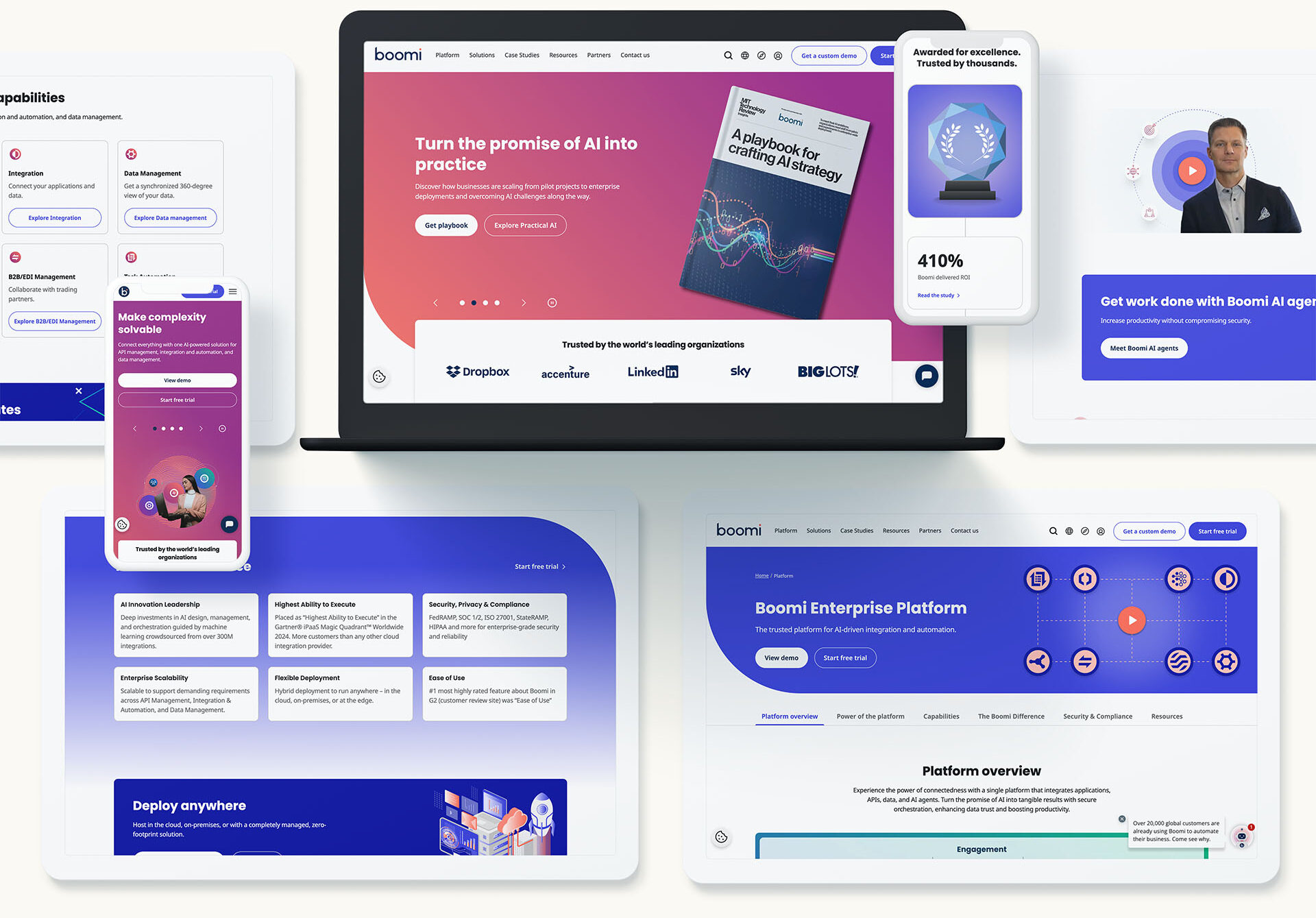
Take the Next Step: Make Your UX a Differentiator
In the modern B2B landscape, user experience is no longer a secondary consideration—it’s a powerful lever for differentiation. From digital platforms to campaign microsites and lead capture forms, frictionless UX can elevate your brand, increase conversions, and strengthen customer loyalty.
Federal technology companies face a unique marketing challenge. They build highly sophisticated tools that solve complex mission needs—yet communicating those capabilities in a way that resonates with government buyers is no small task. Acronyms, technical jargon, and dense feature lists rarely inspire decision-makers. What does? Storytelling.
The most successful federal contractors and technology innovators know how to translate capabilities into clear, compelling narratives. They move beyond “what we do” and focus on “why it matters”—to the mission, to the warfighter, to the public sector customer. In today’s competitive federal landscape, storytelling is the difference between blending into the noise and standing out with a campaign that truly resonates.
Why Storytelling Matters in Federal Tech Marketing
Capabilities on their own don’t sell. Every Fed Tech firm has engineers, IP, and technical differentiators. What separates leaders from the pack is the ability to shape those capabilities into stories that drive impact.
- Decision-makers buy outcomes, not specs. A CIO isn’t persuaded by a list of features. They want to know how a solution enhances readiness, improves security, or reduces cost.
- Complex missions need simple narratives. Government missions are layered and multifaceted. Storytelling makes those missions relatable, focusing on impact rather than complexity.
- Trust is built through clarity. When you distill advanced technology into a human story, you show that you understand your audience’s priorities—not just your product’s features.
The federal buying process is long and competitive. Effective storytelling helps position your brand at the top of the shortlist by aligning your narrative with the mission at hand.

From Capability to Campaign: Building the Narrative Framework
Translating federal tech capabilities into campaigns requires structure. It’s about creating a narrative framework that connects the dots between what your company does and why it matters.
- Start with the mission. Anchor your story in the government agency’s core mission: national security, citizen services, space exploration, or digital modernization.
- Define the challenge. Frame the “why” by highlighting the barriers or inefficiencies that agencies face.
- Introduce the capability. Position your solution as the enabler of mission success—not the hero itself.
- Highlight the outcome. Show measurable impact: faster decision-making, enhanced resiliency, improved collaboration.
- Elevate the human element. Connect the dots to the people behind the mission—warfighters, civil servants, or end-users.
This narrative foundation becomes the spine of a campaign, ensuring every creative asset ties back to a cohesive and resonant story.
Campaign Tactics That Bring Federal Tech Stories to Life
Once the narrative is built, it’s time to translate it into channels and formats that reach the right decision-makers. For federal tech companies, some of the most effective campaign tactics include:
- Video storytelling: Short videos that show how a solution impacts the mission—whether through a warfighter’s perspective or a CIO’s voice—are more memorable than feature sheets.
- Interactive demos: Rather than presenting static slides, interactive content lets buyers see how capabilities translate into real-world results.
Thought leadership content: Blogs, whitepapers, and op-eds that frame solutions in the context of policy priorities build credibility. - Tradeshow activations: Federal events like AFCEA, GEOINT, and AUSA are opportunities to translate capabilities into immersive, story-driven experiences.
- Digital campaigns: Targeted LinkedIn ads and social content help extend the campaign story to specific buyer personas.
Each channel reinforces the same narrative thread, ensuring consistent and compelling storytelling across touchpoints.
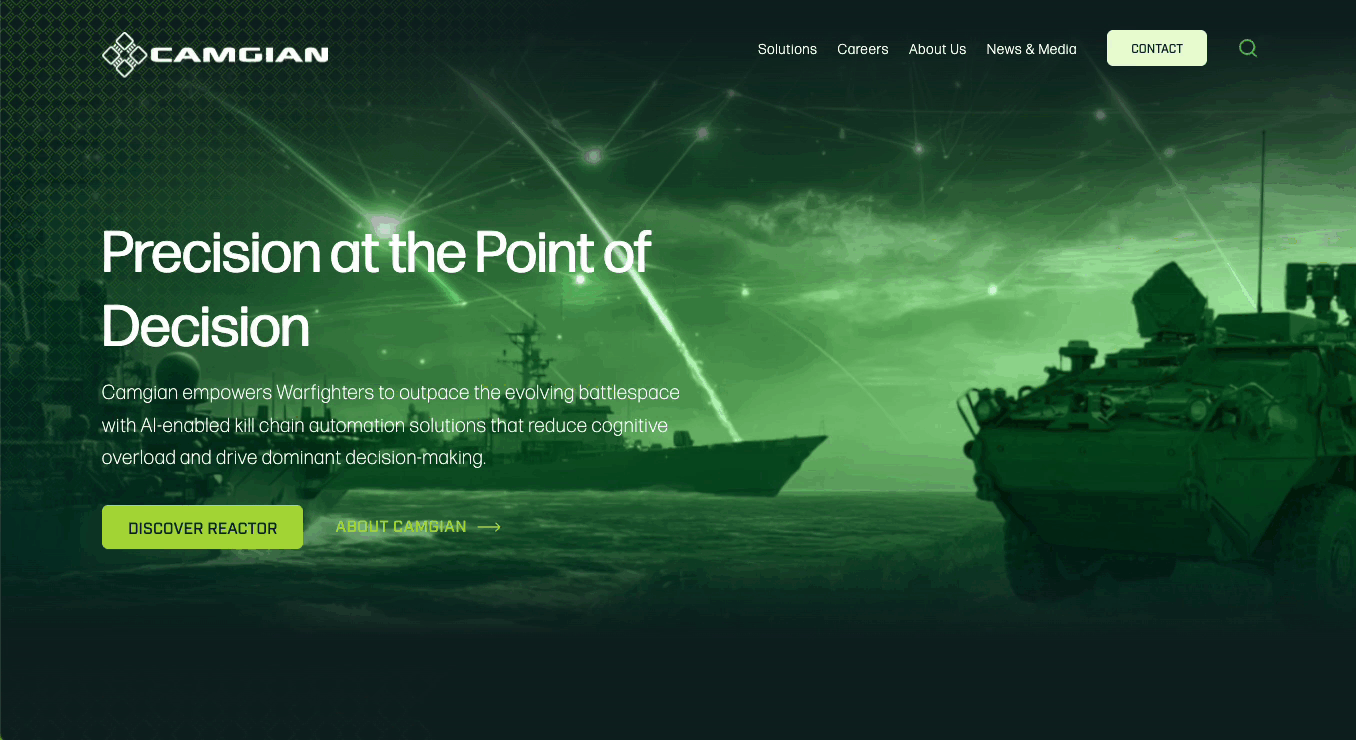
Examples of Storytelling in Federal Tech
While we can’t share client details directly, here are common storytelling approaches that federal tech leaders have successfully used:
- The Mission Hero: Campaigns that highlight how the technology empowers the warfighter or civil servant, shifting the spotlight from the brand to the end-user.
- The Future-Ready Agency: Narratives that position capabilities as enablers of digital transformation, showing how an agency can adapt to tomorrow’s challenges today.
- The Trusted Partner: Storylines that underscore reliability, security, and trust—qualities that are critical in the federal space.
These archetypes simplify complex offerings and frame them in ways that resonate with federal audiences.
Best Practices for Fed Tech Storytelling Campaigns
To turn technical capabilities into high-performing campaigns, federal marketers should keep a few best practices in mind:
- Avoid acronym overload. Speak in human terms. Technical buyers still respond better to stories than to alphabet soup.
- Balance detail with clarity. Provide enough specificity to show credibility, but always lead with outcomes.
- Leverage visuals. Infographics, animations, and data visualizations make abstract capabilities tangible.
- Segment audiences. Tailor the story differently for decision-makers, influencers, and end-users.
- Measure resonance. Track not just clicks, but engagement with the narrative—are audiences spending time with your content, watching your videos, or downloading assets?
By following these practices, campaigns achieve the rare balance of being both technically accurate and emotionally compelling.

The Future of Federal Tech Marketing: Story-First Strategies
Federal agencies are facing unprecedented challenges—from evolving cyber threats to space-based operations to citizen experience modernization. As missions grow more complex, the need for clarity in communication grows stronger.
The future of Fed Tech marketing lies in story-first strategies: campaigns that distill advanced technologies into human-centric narratives that resonate with both the technical buyer and the mission stakeholder. The brands that master this will not only win contracts, they’ll also shape the conversation around the future of federal innovation.
Turn Capabilities into Campaigns That Resonate
Capabilities may win engineers’ respect, but stories win contracts. For federal technology firms, success lies in building campaigns that move beyond features to highlight mission impact, human outcomes, and national importance.
At Bluetext, we specialize in helping federal tech companies shape their capabilities into compelling stories that stand out in a crowded marketplace. If you’re ready to transform your technical strengths into campaigns that resonate with the federal audience, contact us today to start building your story.
When most marketers think of vertical video, they picture TikTok dances, viral consumer content, and Gen Z scrolling endlessly on their phones. But in 2025, vertical video is no longer just a consumer phenomenon. It’s emerging as one of the most effective tools in the B2B marketer’s toolkit—especially as more professionals consume content on mobile-first platforms like LinkedIn, YouTube Shorts, and Instagram Reels.
For B2B brands, this isn’t about chasing trends for the sake of novelty. Vertical video is about meeting audiences where they are, in the format they prefer, with stories that are designed to be consumed quickly and easily. If your business isn’t exploring vertical video yet, you’re leaving visibility, engagement, and credibility on the table.
Why Vertical Video Works for B2B Audiences
The argument for vertical video in B2B comes down to one simple truth: decision-makers are people, too. They use the same devices, engage on the same platforms, and are shaped by the same digital habits as consumer audiences.
- Mobile-first mindset. More than 80% of B2B buyers now research vendors on their mobile devices at some point in the buying journey. Vertical video feels natural in this environment, eliminating the need to rotate screens or resize windows.
- Higher engagement rates. Industry studies consistently show that vertical video generates higher completion rates and stronger engagement compared to horizontal formats, especially on platforms like LinkedIn and YouTube Shorts.
- Efficient storytelling. In a world where attention spans are shrinking, vertical video’s bite-sized storytelling makes it easy for professionals to get the information they need without sitting through a full webinar or whitepaper.
Vertical video isn’t about stripping away depth; it’s about presenting complex ideas in a format that meets audiences where they are.

Beyond TikTok: Platforms Driving Vertical Video for B2B
TikTok may have pioneered vertical video at scale, but the format has since spread across every major digital channel—many of which are central to B2B marketing strategies.
- LinkedIn: The professional network has leaned heavily into video content, with native vertical videos appearing in feeds and ad placements. Companies use vertical clips to promote events, share thought leadership, and highlight product launches.
- YouTube Shorts: While YouTube is often associated with long-form content, Shorts has become a powerful discovery tool. For B2B, Shorts are ideal for micro-educational content, product teasers, or snippets from longer demos.
- Instagram Reels: Once considered strictly consumer-focused, Reels are now a growing space for B2B employer branding, culture marketing, and thought leadership—especially for firms targeting younger professionals.
- Conferences & webinars: Recorded panels, fireside chats, or training sessions can be repurposed into vertical clips that extend the life of in-person events.
The common thread across all of these platforms? Vertical video feels native, and content that feels native performs better.
How B2B Brands Are Using Vertical Video Effectively
The beauty of vertical video is its flexibility. Forward-thinking B2B brands are finding creative ways to adapt the format across the funnel:
- Customer testimonials: Instead of lengthy case studies, short vertical clips featuring customer soundbites offer authentic, shareable proof of value.
- Thought leadership snippets: Executives and subject matter experts can deliver quick insights in under 30 seconds—perfect for keeping a brand top of mind.
- Behind-the-scenes content: From office tours to day-in-the-life clips, vertical video humanizes even the most technical organizations.
- Product demos: Micro-demos show off specific features or benefits, giving buyers a taste of value before committing to longer content.
- Recruitment campaigns: Highlighting company culture through vertical video helps attract top talent, especially younger generations entering the workforce.
For example, SaaS brands Bluetext partners with have seen success by repurposing long-form demos into vertical cuts, which serve as both awareness drivers and conversion tools. By meeting prospects in their feeds with digestible video, they create more touchpoints without reinventing the wheel.
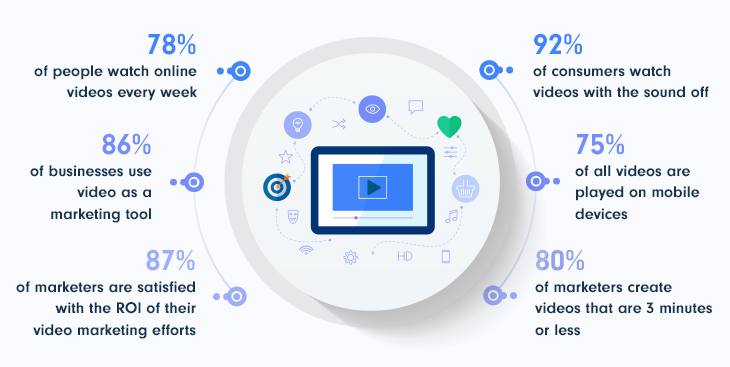
Best Practices for Vertical Video in B2B Marketing
Getting vertical video right requires more than just cropping existing footage. The most effective brands take a strategic approach:
- Keep it short. Aim for 15–60 seconds. Professionals are more likely to engage when content is quick to consume.
- Design for silent viewing. Up to 80% of social video is watched without sound. Adding captions ensures accessibility and improves engagement.
- Prioritize mobile-first storytelling. Use tight framing, bold visuals, and direct messaging that works on small screens.
- Repurpose long-form content. Don’t start from scratch—turn webinars, whitepapers, and conference presentations into vertical video highlights.
- Measure what matters. Track watch-through rates, engagement, and conversions, not just views. In B2B, quality of engagement beats quantity.
By applying these best practices, vertical video becomes not just another format, but a high-performing piece of an integrated B2B content strategy.
The Future of Vertical Video in B2B
Vertical video’s rise is not a passing trend—it’s a reflection of broader shifts in how professionals consume and share information. Looking ahead, several factors will make vertical video even more central to B2B marketing:
- Generational change. Younger decision-makers who grew up on mobile-first content are moving into leadership roles. Their expectations will shape how B2B brands communicate.
- AI-powered editing. Tools are making it easier to automatically repurpose long-form video into polished vertical snippets at scale.
- Omnichannel integration. Vertical video will no longer live solely on social—it will be embedded in websites, sales enablement platforms, and internal communications.
- Performance-based expectations. As vertical video becomes standard, stakeholders will expect measurable ROI, pushing marketers to refine their strategies even further.
In other words, vertical video is moving from “nice to have” to “must have.” The B2B brands that embrace it now will have a competitive advantage as audiences continue shifting toward mobile-first experiences.
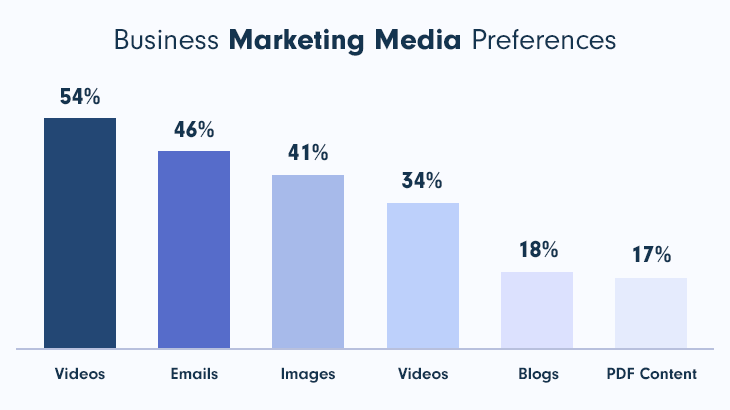
Vertical Video Is the New B2B Standard
Vertical video is not just a TikTok trend. It’s a fundamental shift in how information is shared and consumed across industries. From LinkedIn thought leadership clips to repurposed conference highlights, B2B brands that adopt vertical video are seeing stronger engagement, broader reach, and more meaningful connections with their audiences.
The question isn’t whether vertical video belongs in B2B marketing—it’s how quickly you can integrate it into your strategy.
At Bluetext, we help businesses build content strategies that resonate in the channels and formats that matter most. If you’re ready to explore how vertical video can elevate your B2B marketing, contact us today to start building your vertical-first strategy.
Government contracting is a high-stakes, highly competitive market. With more government buyers turning to AI-powered generative search tools to quickly find trusted vendors and solutions, Answer Engine Optimization (AEO) has become a critical strategy for GovCon firms. AEO ensures your capabilities, certifications, and past performance are prominently featured in AI-generated procurement insights.
Why AEO is a Game Changer for GovCon Firms
Generative AI engines prioritize content that is structured, authoritative, and aligned with the specific needs of government procurement officers. Optimizing for AEO means your firm can:
- Increase visibility in AI-powered contract searches.
- Clearly communicate your compliance and certifications.
- Provide quick, AI-friendly access to past performance and capabilities.
AEO Strategies Tailored for GovCon
1. Publish Detailed Capability Statements
Create well-organized pages that succinctly describe your services, certifications, and unique differentiators, formatted for easy AI extraction.
2. Develop FAQ Sections Targeted at Procurement Queries
Anticipate government buyers’ common questions and provide concise, authoritative answers on contract processes, compliance, and requirements.
3. Use Schema Markup to Highlight Contract Awards and Partners
Structured data can showcase your contract wins, strategic partnerships, and affiliations, signaling credibility to AI engines.
4. Share Data-Driven Past Performance Case Studies
Provide detailed, metrics-focused examples of successful government projects to help AI systems assess your qualifications.
5. Maintain Up-to-Date Compliance Information
Regularly update content on certifications, registrations (like SAM.gov), and regulatory compliance to stay relevant in AI-generated results.
Benefits of AEO for GovCon Firms
- Improves discoverability by procurement officers using AI chatbots.
- Shortens the procurement research cycle with AI-summarized insights.
- Positions your firm as a trusted, capable partner in government contracting.
Challenges and Tips for Effective AEO in GovCon
- Avoid overly technical language that confuses AI.
- Keep content factual and regularly updated.
- Ensure your website architecture supports easy navigation and AI indexing.
Answer Engine Optimization is transforming how GovCon firms connect with government buyers in an AI-driven marketplace. By investing in AEO today, you can gain a critical advantage in winning contracts and building lasting government relationships.
Bluetext specializes in helping GovCon firms master AEO strategies tailored for the unique demands of government procurement. Contact us to get started on your AEO journey.
In B2B marketing, subject matter experts (SMEs) are a company’s hidden superpower. Their expertise can position your brand as an authority, but without visibility, insight alone rarely moves the needle. That’s where LinkedIn Paid campaigns come in. By strategically amplifying SMEs’ content, organizations can turn thought leadership into a measurable engine for demand generation, simultaneously building brand authority and generating qualified leads.
The key is balance: authentic, insightful content combined with paid amplification ensures SMEs are seen by the right audience at the right time, without losing credibility or sounding overtly promotional.
Identifying the Right Subject Matter Experts for Amplification
Not every internal expert is naturally suited to public-facing thought leadership. Effective SMEs for LinkedIn campaigns typically:
- Possess deep industry knowledge relevant to your target audience
- Communicate clearly and persuasively in written or video formats
- Are enthusiastic about sharing insights externally
Aligning SMEs with both business goals and audience personas ensures their content addresses real pain points and resonates with potential buyers. Additionally, internal processes for content approval and compliance should be defined upfront to maintain consistency and brand integrity.
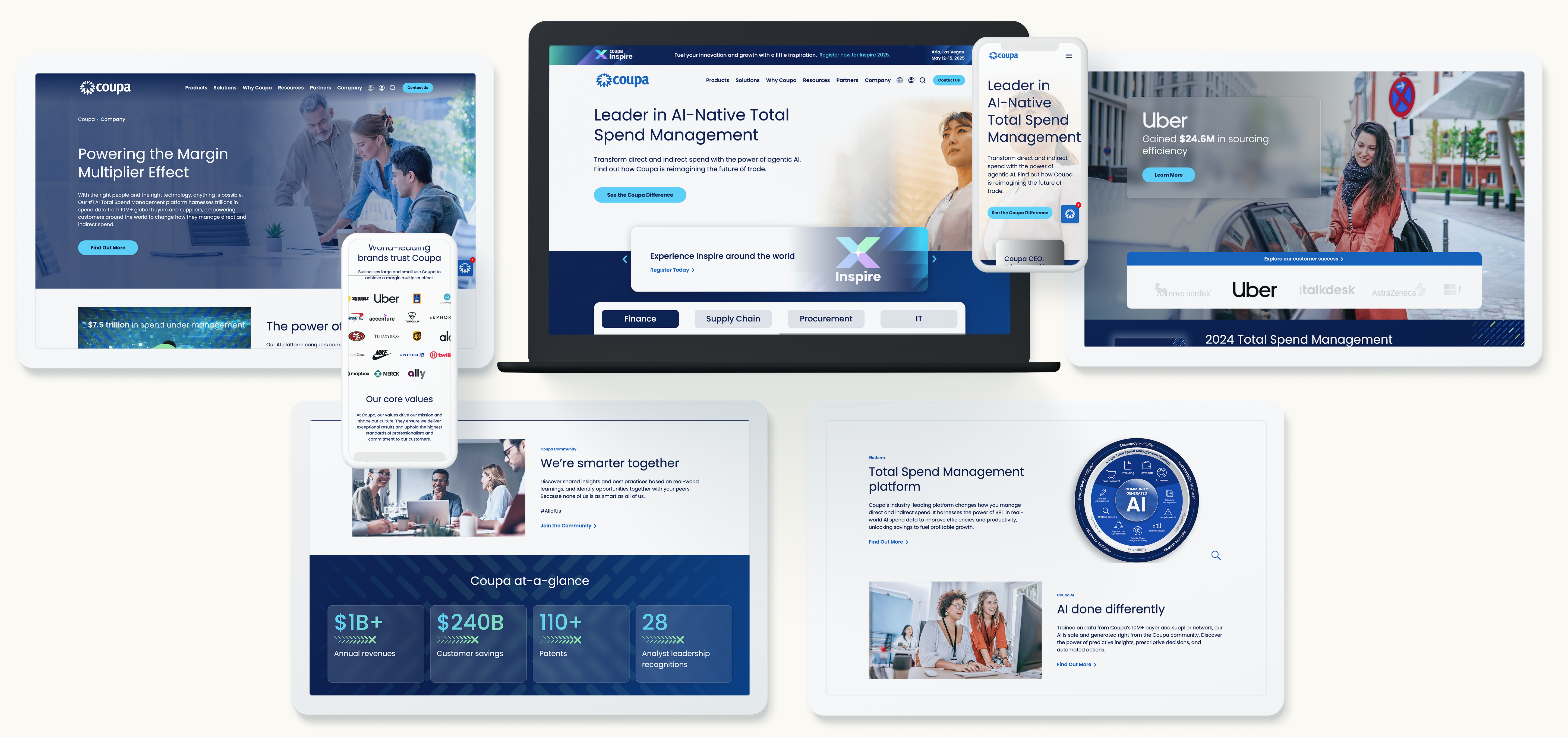
Crafting Content That Resonates on LinkedIn
The most successful LinkedIn campaigns start with content that is:
- Insightful and actionable: Industry trends, lessons learned, or innovative solutions
- Visually engaging: Slide decks, infographics, and carousel posts
- Digestible: Short, well-structured posts or video snippets for busy professionals
Repurposing internal expertise into formats optimized for LinkedIn engagement helps SMEs reach audiences efficiently while establishing authority. For instance, a technical expert can transform a complex whitepaper into a concise slide deck that highlights key takeaways for decision-makers.
Designing Paid LinkedIn Campaigns for Maximum Impact
Paid campaigns allow marketers to extend the reach of SME content beyond organic followers. Key components include:
Audience Segmentation
Targeting should be precise: decision-makers, industry peers, and relevant professional groups. Use LinkedIn filters such as role, seniority, company size, and industry to ensure content reaches the right people.
Campaign Objectives
- Awareness: Boost SME visibility and brand credibility
- Engagement: Encourage likes, comments, shares, and content interactions
- Conversion: Capture leads through webinar registrations, downloads, or demo requests
Budget and Bidding Strategy
Start with modest budgets to test performance, then scale successful campaigns. LinkedIn offers bidding options optimized for engagement or lead generation depending on your objectives.
Ad Creative Tips
- Showcase the authentic voice of the SME
- Include a clear call-to-action linking to gated content or lead capture forms
- Use compelling visuals, charts, or infographics to reinforce authority

Measuring Success: From Authority to Pipeline
To ensure SMEs drive tangible business results, track both brand authority and demand metrics:
- Thought leadership metrics: Post views, likes, shares, and comments
- Demand generation metrics: Click-throughs, webinar registrations, form fills, and ultimately qualified leads
Setting up conversion tracking between LinkedIn campaigns and your CRM allows teams to quantify ROI and refine strategies based on what drives engagement and pipeline growth.
Optimizing and Scaling SME Campaigns
Continuous improvement ensures long-term impact:
- A/B test different content types, messaging angles, and ad formats
- Use retargeting to nurture previously engaged audiences
- Expand campaigns to additional SMEs or regional markets while maintaining authenticity
Scaling requires consistency: every SME’s voice should align with brand messaging while reflecting their unique expertise.
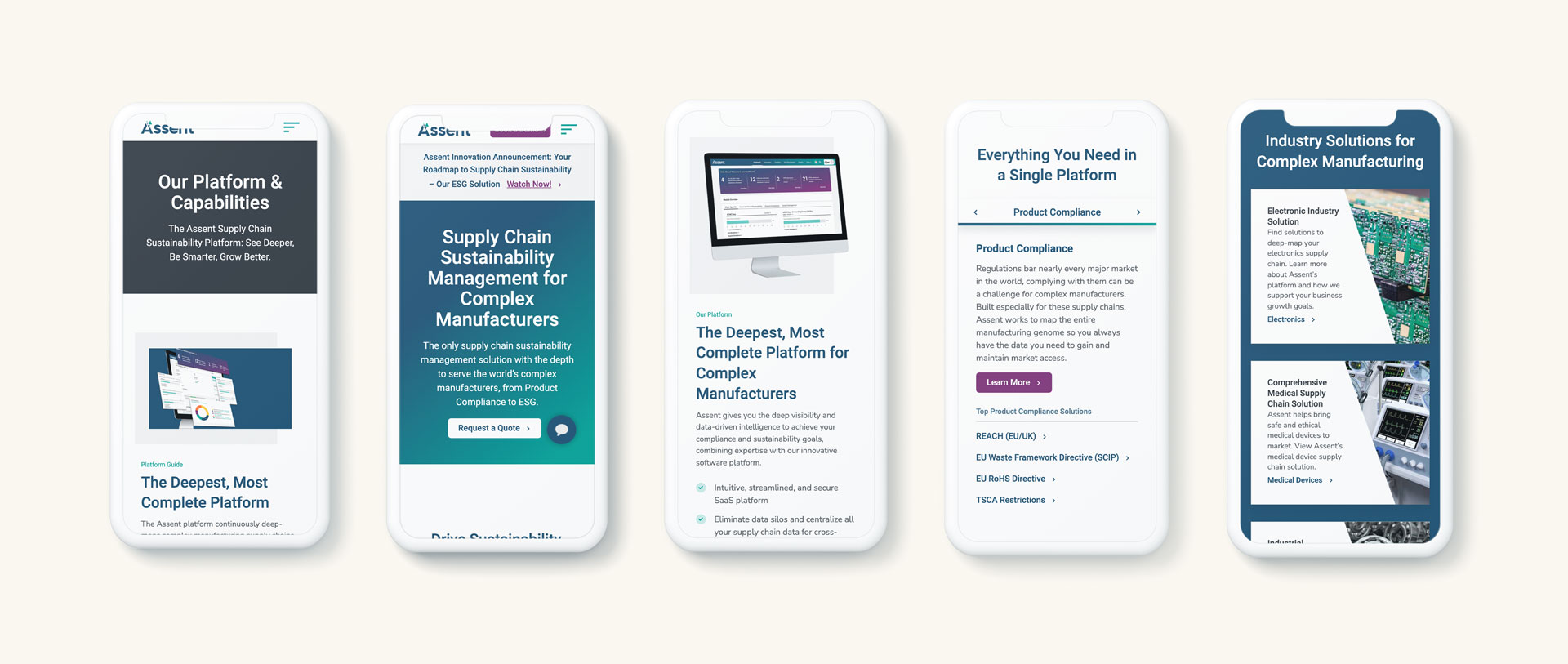
Best Practices and Compliance
Effective campaigns adhere to professional and ethical standards:
- Follow LinkedIn content guidelines and industry regulations
- Ensure SME messaging aligns with brand voice and approvals
- Avoid over-promotion; focus on insight and thought leadership to maintain credibility
Unlocking the Full Potential of LinkedIn Paid for Thought Leaders
When executed strategically, paid LinkedIn campaigns transform internal SMEs from quiet experts into demand-generating engines. Coordinated campaigns deliver:
- Brand authority: Positioning your organization as a leader in your field
- Pipeline growth: Driving engagement, leads, and conversions
Bluetext helps B2B marketers amplify their experts on LinkedIn to drive both authority and pipeline. Contact us to transform your thought leaders into demand engines.